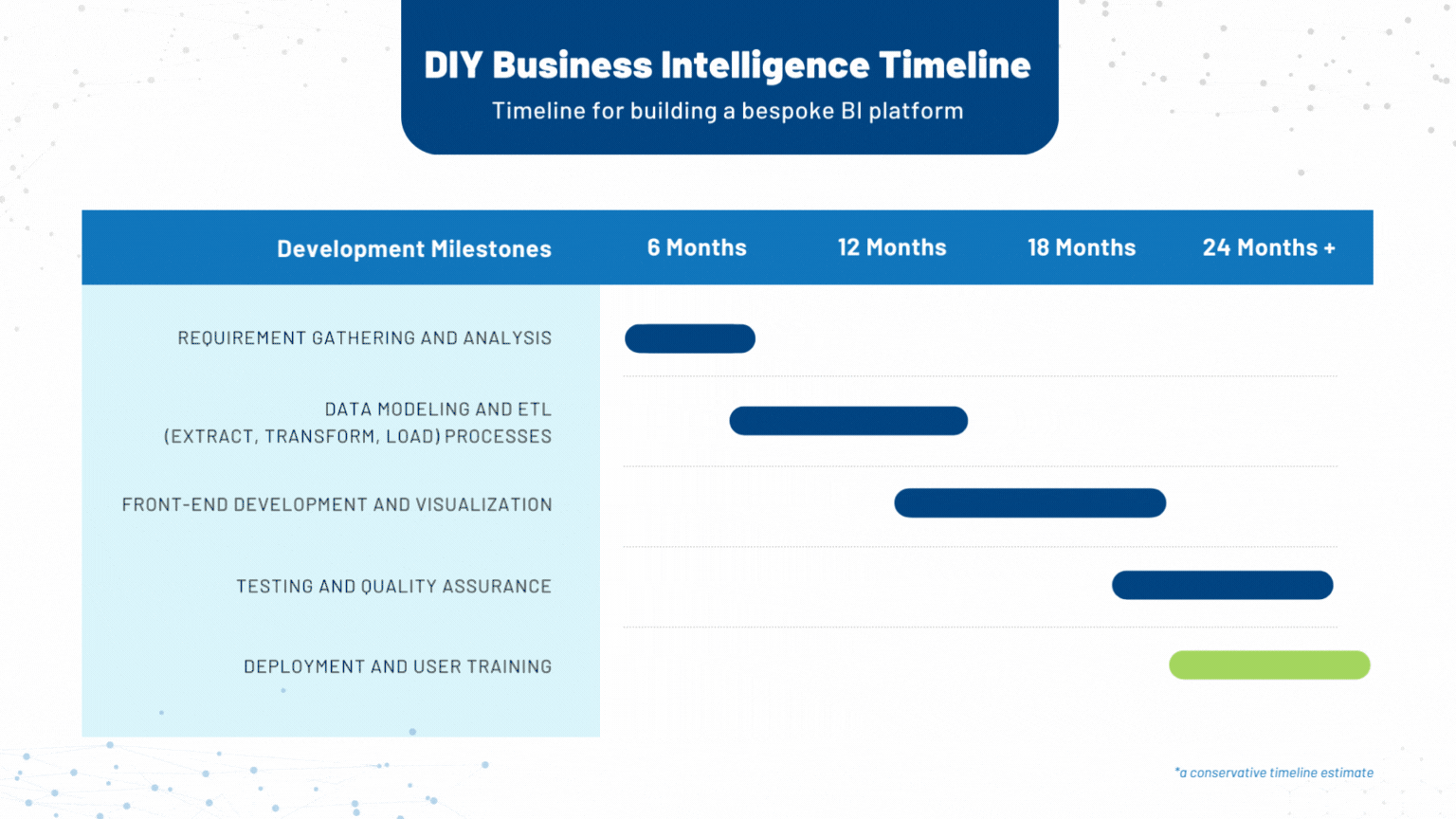While the allure of customizability and control may be enticing, it is crucial to understand the potential drawbacks and long-term implications of pursuing a Do-It-Yourself (DIY) approach to Business Intelligence (BI). By understanding the hidden costs, decision-makers can make informed choices that maximize efficiency, minimize risks, and drive success in the multifamily industry’s data-driven landscape.
Focus on Development Costs
Building a BI solution in-house often involves a focus on visible and upfront costs, such as hiring developers or investing in technology infrastructure. However, organizations may overlook the ongoing costs and challenges that emerge during and after development. This myopic focus on initial expenses can fail to anticipate the full spectrum of financial commitments required for a successful in-house BI solution.
Underestimating Technical Expertise
Organizations might underestimate the level of technical expertise required to develop a robust BI solution in-house. If existing resources can handle the entire development, the process may lead to challenges. Acquiring or developing the necessary technical skills within the organization can be time-consuming and costly, impacting the efficiency and effectiveness of the development process.
Time and Extended Development
The complexity of the development process, coupled with challenges in data integration and the learning curves associated with building a BI solution from scratch, can lead to extended timelines. Prolonged development timelines not only delay the availability of critical business insights but also result in increased costs, as more time often translates to more resources being dedicated to the project.

Ongoing Maintenance and Support
Neglecting the ongoing maintenance needs of an in-house BI platform can result in increased costs and potential disruptions in system functionality. Continuous updates, bug fixes, and technical support are essential components of maintaining a BI solution. Failure to account for these ongoing needs can lead to unforeseen expenses and a diminished return on investment.
Integration Challenges
Integrating a DIY BI platform with existing systems within the organization can be complex and time-consuming. Data inconsistencies, compatibility issues, and the need for data transformations may arise during the integration process, leading to additional development efforts and hidden costs. The challenge lies not only in the integration itself but also in ensuring seamless functionality across various interconnected systems.
Lack of Specialized Features and Functionality
Organizations may underestimate the effort and costs required for developing complex functionalities that are readily available in commercial BI solutions. This oversight can lead to limitations in the platform's capabilities, hindering its ability to meet specific business needs. The lack of specialized features may result in a BI solution that falls short of addressing the organization's multifaceted requirements.
While DIY BI solutions may provide advanced capabilities, organizations must acknowledge and thoughtfully anticipate the associated hidden costs. A thorough grasp of the complete development lifecycle, ongoing maintenance requirements, and integration challenges is imperative for making well-informed decisions and guaranteeing the triumph of an in-house BI initiative.




.jpg)

SHARE